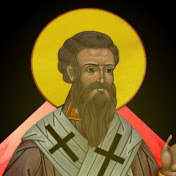How, then, was He manifested to the world? A star shone forth in heaven above all the other stars. The light from this star was inexpressible, and its uniqueness struck men with astonishment. Ignatius (c. 105, E), 1.57.
At the time of His birth, Magi came from Arabia and worshipped Him. . . . When the Child was born in Bethlehem, since Joseph could not find an inn in that village, he took up his lodging in a certain cave near the village. While they were there, Mary brought forth the Christ and placed Him in a manger. Here the Magi who came from Arabia found Him. Justin Martyr (c. 160, E), 1.237.
Christ was born one hundred and fifty years ago under Cyrenius. Justin (c. 160, E), 1.178.
Therefore, from the birth of Christ to the death of Commodus are a total of one hundred ninety-four years, one month, and thirteen days. There are those who have calculated not only the year of our Lord’s birth, but also the day. They say that it took place in the twenty-eighth year of Augustus, on the twenty-fifth day of Pachon [May 20]. . . . Others say that He was born on the twenty-fourth or twenty-fifth day of Pharmuthi [April 19 or 20]. Clement of Alexandria (c. 195, E), 2.333.
Jesus was from the native soil of Bethlehem, and from the house of David. For, among the Romans, Mary is described in the census, of whom is born Christ. Tertullian (c. 197, W), 3.164.
It was not any of the constellations existing in the sky that was made to be the star of the East. Rather, it was something of another order, appointed for this purpose and in the service of the knowledge of Jesus. Origen (c. 228, E), 9.312.
Let him know that, in conformity with the narrative in the Gospel regarding His birth, there is displayed at Bethlehem the cave where Jesus was born and the manger in the cave where He was wrapped in swaddling clothes. And this sight is greatly talked of in the surrounding places—even among the enemies of the faith. They say that in this cave was born that Jesus who is worshipped and reverenced by the Christians. Origen (c. 248, E), 4.418.
The star that was seen in the east we consider to have been a new star, unlike any of the other well-known planetary bodies. . . . Yet, it had the nature of those celestial bodies that appear at times, such as comets. . . . It has been observed that, on the occurrence of great events, and of mighty changes in earthly things, such stars are apt to appear, indicating either the removal of dynasties or the breaking out of wars. . . . There is a prophecy of Balaam recorded by Moses to this effect: “There will arise a star out of Jacob, and a man will rise up out of Israel.” Origen (c. 248, E), 4.422.
